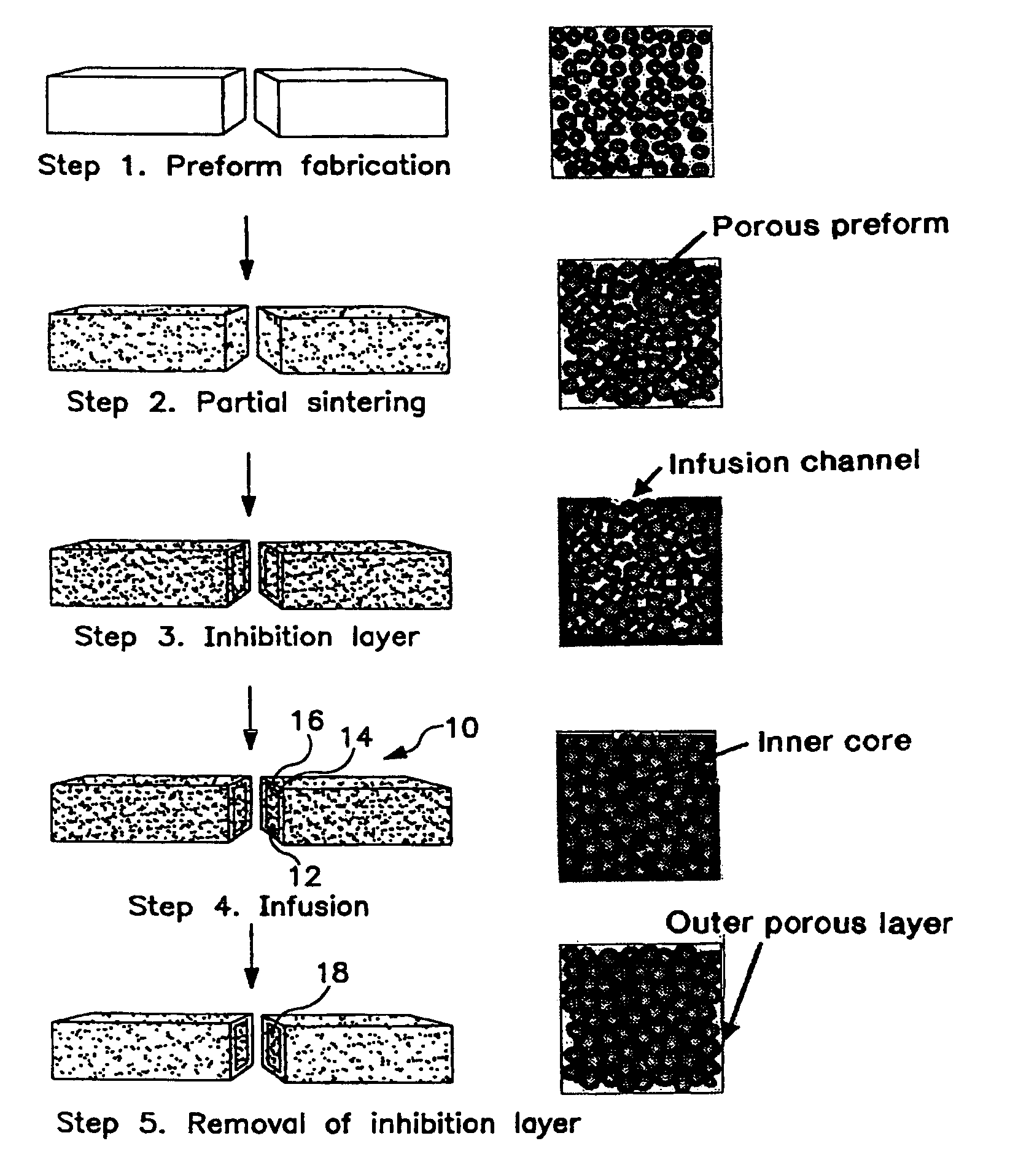Polymer re-inforced anatomically accurate bioactive protheses
a bioactive prothesis and polymer technology, applied in the field of polymer reinforced anatomically accurate bioactive protheses, can solve the problems of poor adaptation, insufficient biological fixation, and failure rate of 13–30%, and achieve the effects of improving mechanical properties of implants, enhancing biocompatibility, and improving implant stability
- Summary
- Abstract
- Description
- Claims
- Application Information
AI Technical Summary
Benefits of technology
Problems solved by technology
Method used
Image
Examples
Embodiment Construction
)
[0016]The porous preform materials can be selected from, but not limited to hydroxyapatite, bioactive glass, calcium phosphates, xenografts, allografts, autografts, isografts, ultrahigh density zirconia, zirconia toughened alumina, alumina, sapphire, titanium, gold / palladium alloys.
[0017]The porous preform can be fabricated by numerous manufacturing routes. For off the shelf implants systems which offer standard sizes and shapes, many conventional processing techniques can be used, including, but not limited to injection molding, compression molding, blow molding, thermoforming, die pressing, slip casting, electrochemical machining, laser cutting, water-jet machining, electrophoretic deposition, powder injection molding, sand casting, shell mold casting, lost foam casting, plaster-mold casting, ceramic-mold casting, investment casting, vacuum casting, permanent-mold casting, slush casting, pressure casting, die casting, centrifugal casting, squeeze casting, rolling, forging, swagin...
PUM
| Property | Measurement | Unit |
|---|---|---|
| flexural strength | aaaaa | aaaaa |
| flexural strength | aaaaa | aaaaa |
| flexural strength | aaaaa | aaaaa |
Abstract
Description
Claims
Application Information
 Login to View More
Login to View More - R&D
- Intellectual Property
- Life Sciences
- Materials
- Tech Scout
- Unparalleled Data Quality
- Higher Quality Content
- 60% Fewer Hallucinations
Browse by: Latest US Patents, China's latest patents, Technical Efficacy Thesaurus, Application Domain, Technology Topic, Popular Technical Reports.
© 2025 PatSnap. All rights reserved.Legal|Privacy policy|Modern Slavery Act Transparency Statement|Sitemap|About US| Contact US: help@patsnap.com


